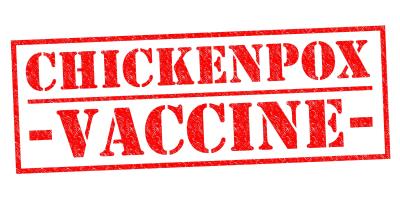About Varicella (Chickenpox)
Varicella, also known as chickenpox, is a very common and highly infectious childhood disease. Symptoms appear 10 to 21 days after infection and last about 2 weeks. The defining symptom is a characteristic blister-like rash, which can cause severe irritation. Most children have a relatively mild illness, but severe illness may occur in adults and people with depressed immunity because of an existing illness or because of treatment that they are receiving (like chemotherapy).
Cause:
Varicella is a generalized viral disease caused by the varicella-zoster virus (VZV), a DNA virus of the herpesvirus family.
Symptoms:
The first noticeable symptom is the onset of a slight fever, which is usually followed by some mild constitutional symptoms, such as a headache, runny nose and a general feeling of malaise (tiredness).
The defining symptom of varicella is the eruption of skin lesions on all areas of the body, including on the scalp and on the mucous membranes of the mouth and upper respiratory tract. These fluid-filled lesions or vesicles occur in “crops”, so that several stages of old and new lesions will be present at the same time. Varicella varies in severity from very mild, with just a few spots, to severe, with fever and a widespread rash. The more severe form is seen more often in adults.
Following the initial varicella illness, varicella-zoster virus then become dormant in the sensory nerve ganglia, which may be reactivated later in life as herpes zoster (also known as Shingles).
Contagious Period:
It may take 10 to 21 days for symptoms to appear after infection has occurred. A person is most contagious from 1 to 2 days before to shortly after the onset of rash. Contagiousness persists until the skin lesions crust over.
Transmission:
Varicella is solely a human disease and is one of the most readily infectious illnesses. The virus can be spread by direct contact with fluid in the lesions or through the airborne spread from the respiratory tract. The attack rate among susceptible contacts in household settings is estimated at 65%-87%.
Prevention and Control:
Varicella can be prevented by immunization. It is recommended that healthy children 12 months to 12 years of age should receive two doses of varicella-containing vaccine (univalent varicella or MMRV) for primary immunization.
Cases should be reported to the local health authority. In addition, isolation can mitigate the spread of illness:
People who have or suspect that they have the disease should avoid public places for at least 5 days after the first crop of lesions appears. If it is necessary to see a physician, call first. There are numerous people to whom varicella can be life-threatening, including newborns, people with depressed immunity and individuals with serious illnesses like cancer, any of whom could be visiting the physician’s office.
Keep infected children away from school or public places until the last lesions have scabbed over. Wash or disinfect articles that may have been soiled by the vesicle fluid or by any discharge from the nose or throat.
Contacts, especially children, must have their immunization status verified. If immunization status is incomplete and no contraindications are identified, necessary doses of vaccine should be given.
